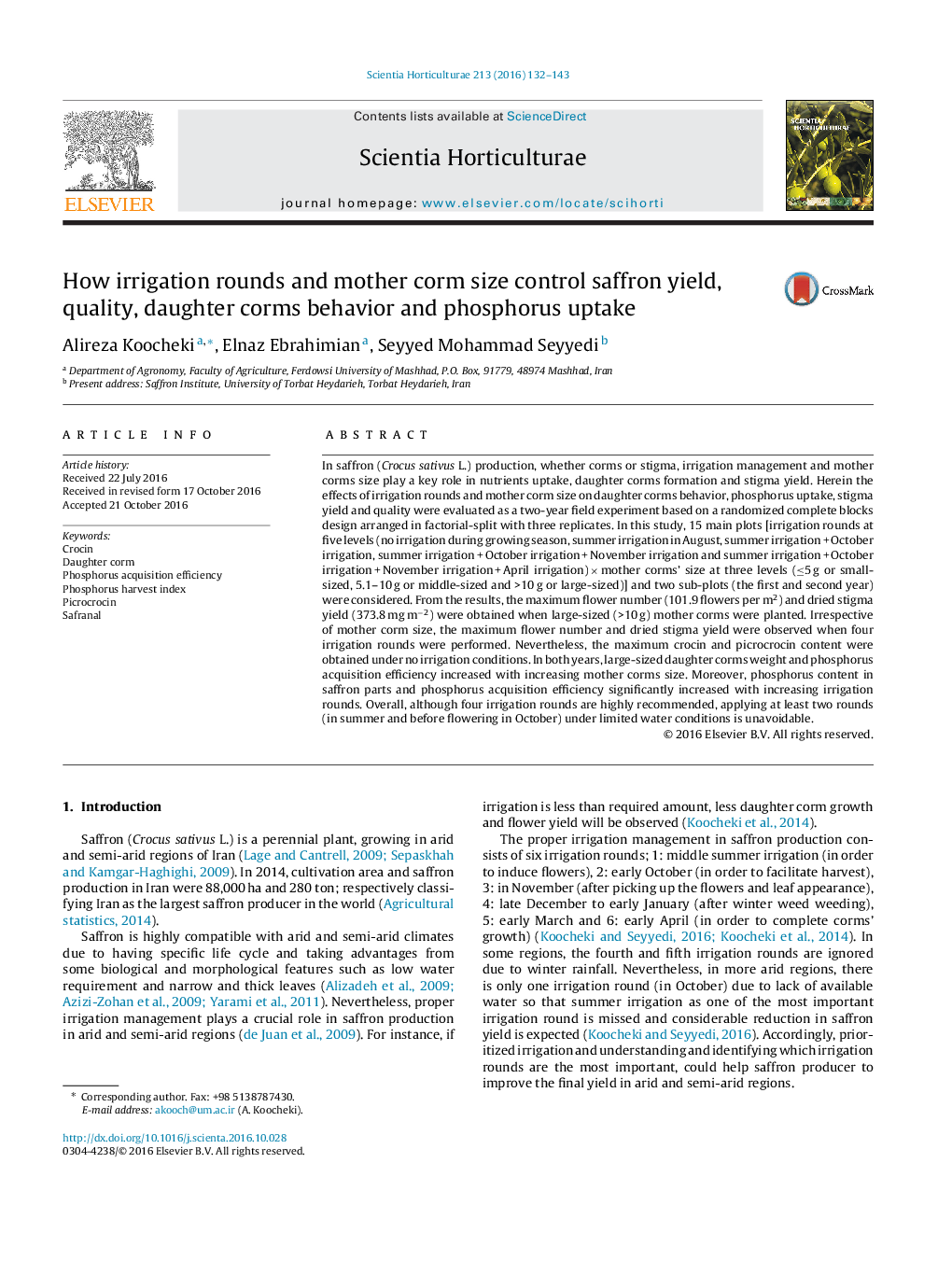| Article ID | Journal | Published Year | Pages | File Type |
|---|---|---|---|---|
| 4565893 | Scientia Horticulturae | 2016 | 12 Pages |
•The maximum crocin and picrocrocin content were obtained under no irrigation conditions.•Summer irrigation increased dried stigma yield compared with no irrigation treatment.•Small-sized daughter corms number decreased with increasing mother corm weight.•Phosphorus acquisition efficiency increased with increasing irrigation rounds.
In saffron (Crocus sativus L.) production, whether corms or stigma, irrigation management and mother corms size play a key role in nutrients uptake, daughter corms formation and stigma yield. Herein the effects of irrigation rounds and mother corm size on daughter corms behavior, phosphorus uptake, stigma yield and quality were evaluated as a two-year field experiment based on a randomized complete blocks design arranged in factorial-split with three replicates. In this study, 15 main plots [irrigation rounds at five levels (no irrigation during growing season, summer irrigation in August, summer irrigation + October irrigation, summer irrigation + October irrigation + November irrigation and summer irrigation + October irrigation + November irrigation + April irrigation) × mother corms’ size at three levels (≤5 g or small-sized, 5.1–10 g or middle-sized and >10 g or large-sized)] and two sub-plots (the first and second year) were considered. From the results, the maximum flower number (101.9 flowers per m2) and dried stigma yield (373.8 mg m−2) were obtained when large-sized (>10 g) mother corms were planted. Irrespective of mother corm size, the maximum flower number and dried stigma yield were observed when four irrigation rounds were performed. Nevertheless, the maximum crocin and picrocrocin content were obtained under no irrigation conditions. In both years, large-sized daughter corms weight and phosphorus acquisition efficiency increased with increasing mother corms size. Moreover, phosphorus content in saffron parts and phosphorus acquisition efficiency significantly increased with increasing irrigation rounds. Overall, although four irrigation rounds are highly recommended, applying at least two rounds (in summer and before flowering in October) under limited water conditions is unavoidable.
